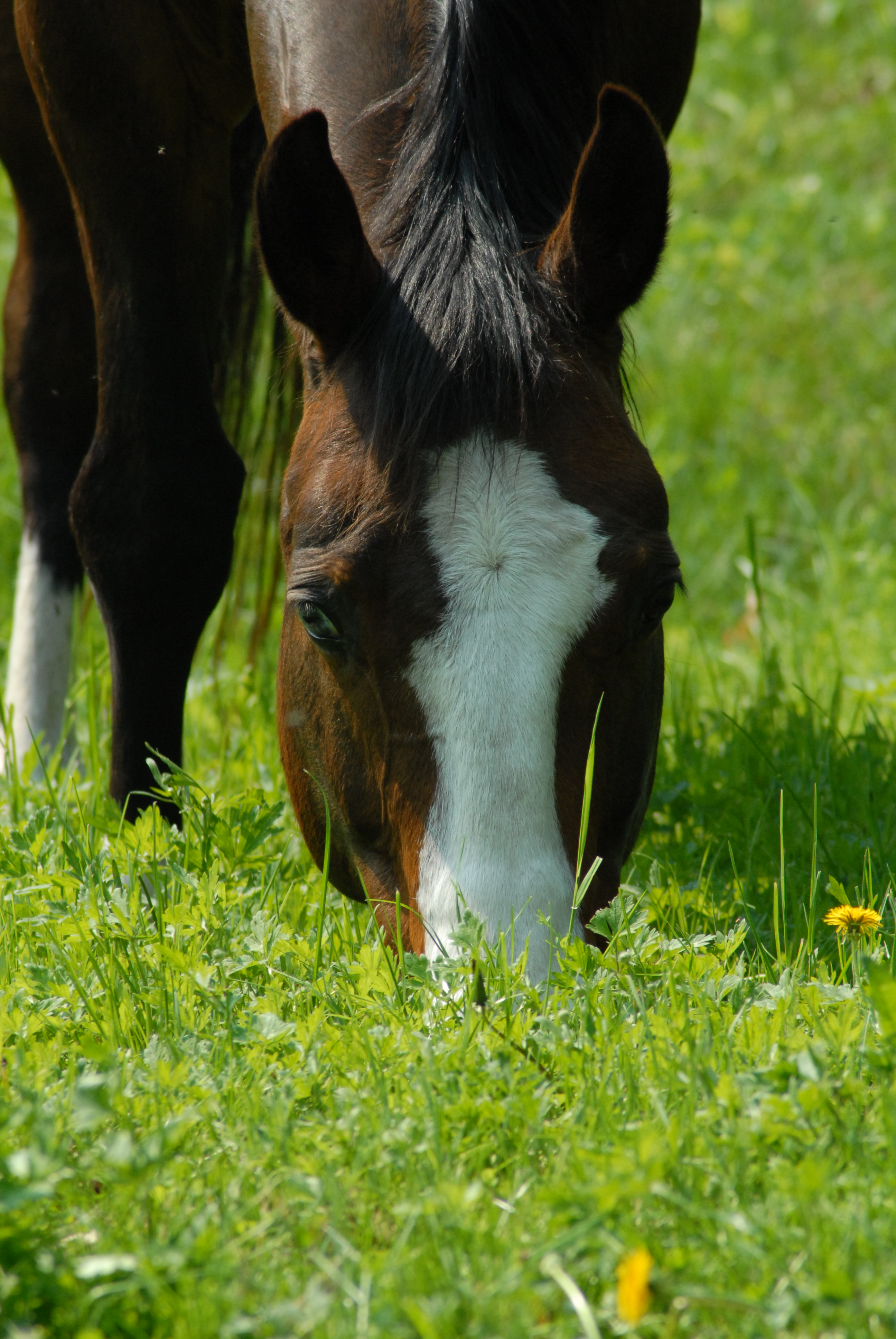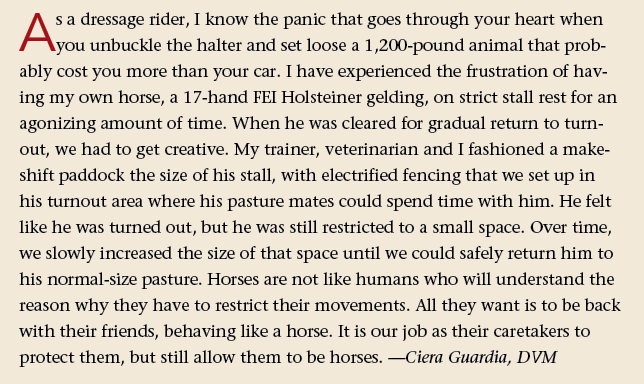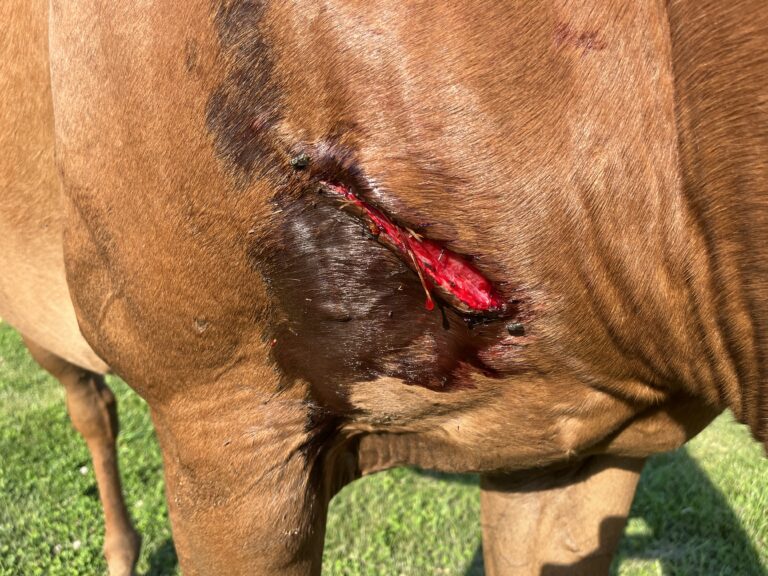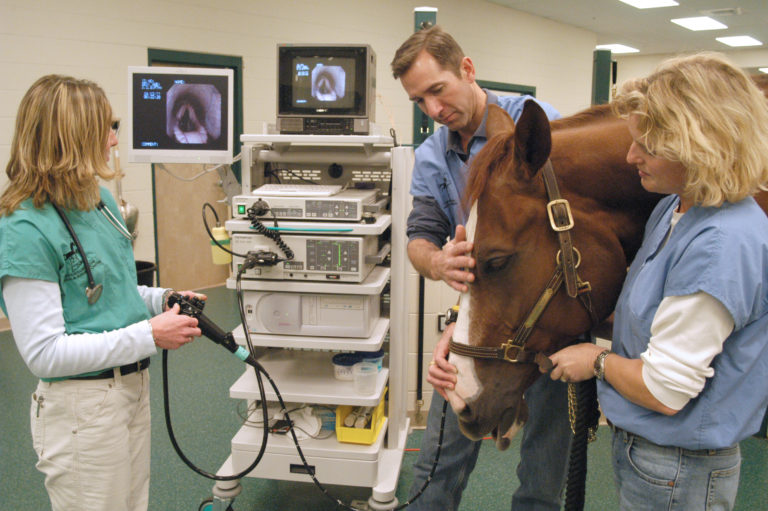
(Dusty
Proper turnout for dressage horses can be a difficult and often scary topic for discussion. Many dressage facilities don’t allow extensive turnout. Some top dressage horses get almost no turnout. The financial investment in these horses can make turning them out into a larger field terrifying for the owner, who fears the worst. Will the horse come back in one piece? Will he still have all his shoes?
Turnout for a horse has a lot of benefits. Just as for us humans, fresh air, light and exercise improve well-being. It generally makes a horse more content and happy. Many top dressage riders have discovered the benefits of turnout, including the mental break it offers the horse, especially when he is in stressful training or frequently traveling during show season. I always tell my clients that the horse needs time to be a horse. Just like you need time to decompress after a stressful day at work or need a soothing shower after a hard workout, horses need their time in the paddock to roll, gallop, snort and whinny. Rolling, bucking, kicking out and all other acrobatics your horse may display in his field can make you hold your breath as you watch (or cover your eyes), but these natural movements help him stretch sore, tight muscles, re-align his spine and help his respiratory system clear arena dust. All of this promotes healthy muscle repair after exercise. It’s important that horses are still allowed to be horses when the time is right.
Turning out your horse promotes healthier, more regulated digestion, as it allows the stomach to produce less gastric acid and decreases the production of gastric ulcers. The digestive system of all mammals is different and is designed to function based on the animal’s natural diet and environment. Before domestication, horses roamed free and grazed continuously for 24 hours per day. Their stomach is relatively small, as they are designed to ingest small meals throughout the entire day. Most horses who are managed in a stalled facility are fed two to three times per day, as this is what is feasible for management. This results in larger meals to ensure the horse’s nutritional requirements are met.
On the down side, when you turn your horse out, the risk of injury is arguably higher. Injuries can occur when he is pastured on uneven surfaces, in deep footing, wet sand, mud or slick surfaces. Also, if he is turned out with other horses, herd dynamics and hierarchy can present risks for fighting to establish dominance.
How long should a horse be turned out? This depends on his individual needs and the condition of the turnout area. If the horse has no injury to rehabilitate, most do well with longer turnout, even 24 hours a day. The reduced turnout time in most boarding and training facilities is usually due to a larger number of horses than the turnout space accommodates, so turnout is rotated. Also, many horses may do better with night turnout or day turnout, depending on their individual health needs. Some may have difficulty sweating or have respiratory issues that necessitate less turnout time than average horses. If the ambient temperature is too hot or too cold, this can cause the horse to utilize his energy cooling or warming himself, which can lower his energy to train and perform.
If you suspect your horse is prone to metabolic issues, such as insulin resistance or Cushing’s disease, he might require reduced or no grazing to maintain his health. Excessive weight gain, poor hoof health, poor hair coat or even laminitis can be signs of underlying metabolic disease. Consult your veterinarian about these concerns. There are many tests that may be performed to determine these diagnoses and best treatment plans.
If the soil is quite sandy, or the turnout area has been grazed down, sand consumption is an issue that can cause sand colitis or sand enteritis. Symptoms of sand colitis include, but are not limited to, mild, chronic colic (abdominal pain), diarrhea and weight loss. Feeding the horse on rubber stall mats and feeding him a psyllium product helps to decrease the amount of sand he might consume. Psyllium is a bulk laxative that settles into the villi of the colon to help sweep out the excess sand. If the pasture has been grazed down to the point where the horse does not have much, if any, grass to eat, supplementation with grass hay and/or alfalfa hay is advised. As with all your nutrition and pasture-management needs, consult your veterinarian for the best plan for you horse.
What is the best time of day for turnout? If the horse is white-faced like many Paints or has a large white mark on his face, risks of squamous cell carcinoma or severe sunburns are high. Nighttime turnout is usually recommended in these cases. A fly mask does not always cover the area fully and only some fly masks actually provide UV protection. There are some products available that provide UV protection in the form of ointments.
When your horse arrives at a new barn, you may have the option of single turnout versus a shared pasture/paddock. Because horses are herd animals, there will always be a social order that must be identified among the horses when first turned out together. There will be one dominant horse, and the rest will find their place in the pecking order over time. Ideally, introduce one new horse to the pasture dynamic at a time under supervision. Horses have to figure out the order of dominance their own way, which often involves biting and/or kicking.
As a dressage rider, I know that alone is enough to strike fear into the heart of any owner. However, once the order has been settled, horses generally are more comfortable and mentally stimulated when turned out together as this is more along their natural herd mentality. Some horses can become too attached to their herd mates, though.
Each situation is different and should be closely monitored in the initial stages. Check your horse over thoroughly (both sides) when he returns from the field. Are any shoes missing? Any bite marks? Any new wounds? Any swelling? Is he sound at the walk and trot? Different combinations may be made until the best herd scenario is found.
Any time a change is introduced, whether it be with a new herd or feed routine, the change must be made gradually. When it comes to feed and turnout, the horse’s gastrointestinal system is quite delicate and can become overwhelmed by too fast a transition. I recommend any feed transition be made over the course of 14 days.
When introducing turnout, the same approach is ideal, although not always followed. If there is lush grass in the new field, a grazing muzzle is helpful to use when turnout time is not restricted but grazing is not desirable. If the horse is suspected to have any metabolic issues, restricted grazing to the early morning hours or none at all may be needed to decrease the horse’s carbohydrate intake. Your veterinarian will be able to guide you in this regard.
Most horses enjoy being turned out. You have to weigh the risks and benefits for your individual situation, making sure your horse stays safe yet happy and content. Consulting your veterinarian and trainer together, as a team, will help you find the best possible plan.

Ciera Guardia, DVM, received her doctorate of veterinary medicine from Texas A&M University. As a teenager and throughout her undergraduate career, she was a competitive FEI dressage rider and assistant trainer at Windy Knoll Farm in Magnolia, Texas, under USDF “S” judge Fran (Dearing) Kehr. An official FEI-permitted treating veterinarian, she operates Guardia Equine Sports Medicine in Cypress, Texas.











